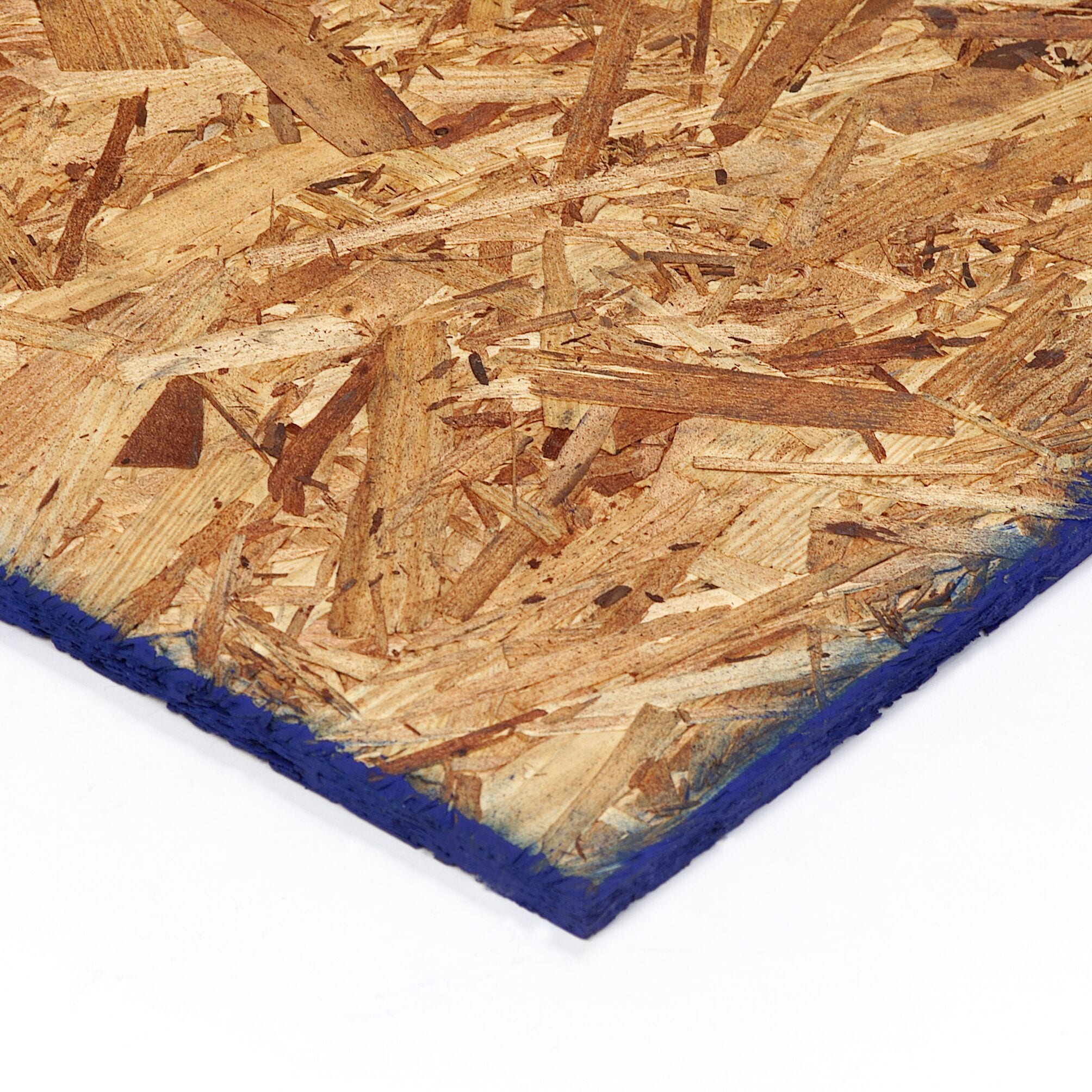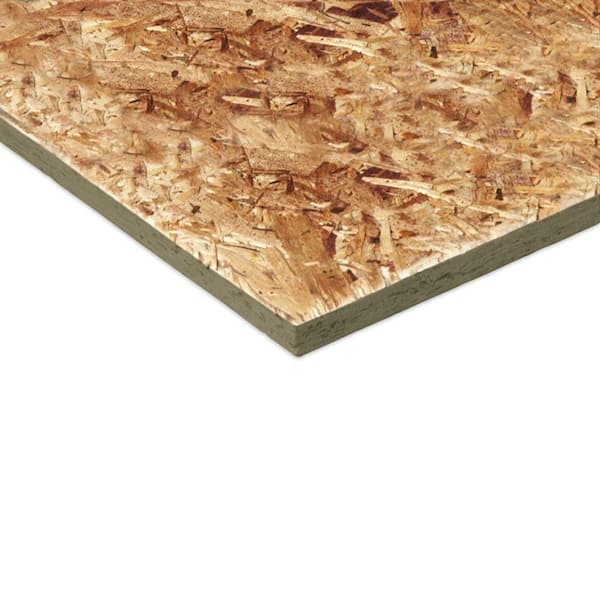No, 7/16 osb is not the same as 1/2 inch osb. While both materials are commonly used for construction purposes, there is a slight difference in thickness that can affect the strength and stability of the structure.
Osb, or oriented strand board, is a type of engineered wood that is made of compressed wood strands and resin. It is a popular alternative to plywood because it is more affordable and durable. However, when it comes to choosing the right thickness for your project, it is important to know the differences between various sizes.
While both 7/16 osb and 1/2 inch osb are similar in terms of strength and durability, the thickness difference can affect the type of load the material can bear. For instance, 1/2 inch osb may be better for heavier loads, while 7/16 osb may be more suitable for lighter loads. Ultimately, the choice between the two will depend on the specific needs of your project.

Credit: www.lowes.com
An Introduction To Osb Panels
Osb panels are becoming a popular choice in construction. So, what is osb? Oriented strand board (osb) is a composite panel made of wood strands and resin. The strands are arranged in layers and pressed together to create a strong, versatile panel.
When selecting an osb panel, it’s important to know the difference between thicknesses such as 7/16 osb and 1/2 inch. While they may seem similar, their load-bearing capabilities are different. Osb panels have several advantages, including being cost-effective and eco-friendly.
However, they can also have downsides, such as being more susceptible to moisture damage than other materials. Before selecting an osb panel for your project, it’s important to weigh these factors and determine what will work best for your needs.
Understanding Osb Thickness
Understanding osb thickness: osb panels are widely used in construction, but understanding the different thickness options can be confusing. Osb panel thicknesses start at 7/16 inch and go up to 1 ¼ inch, but the two most commonly used thicknesses are 7/16 inch and 1/2 inch.
Osb panel thickness is measured in fractions of an inch. While the difference between 7/16 inch and 1/2 inch may seem small, there is a difference in size and weight. The 7/16 inch panel is lighter and therefore more suitable for projects where weight is a concern, such as in roofing.
The 1/2 inch panel is sturdier and better suited for projects such as flooring. Understanding the differences between these two thicknesses can save time and money by ensuring the right thickness is used for each project.
7/16 Osb Panels: Advantages And Applications
7/16 osb panels provide more strength and durability compared to other thickness options. These panels feature a unique thickness, making them an ideal choice for a wide range of applications. From flooring to roofing, these panels are an excellent option for any construction project.
Compared to other thickness options, 7/16 osb panels are also cost-effective. This makes them an attractive option for large-scale projects or diy projects with a tight budget. Overall, 7/16 osb panels are a versatile and reliable option for any construction need.
1/2 Inch Osb Panels: Advantages And Applications
7/16-inch osb and 1/2-inch osb panels appear to be very similar, but their differences lie in their thickness. 1/2-inch osb panels come with a few advantages and applications that set them apart from other thicknesses. For instance, 1/2-inch osb panels are more durable and can withstand heavy loads better than thinner osb panels.
Additionally, 1/2-inch osb panels are an affordable choice that can be applied in a wide range of projects, from walls and roofs to flooring. The thicker panels reduce the effects of telegraphing, and when combined with thicker insulation, can significantly reduce sound transmission.
When compared to other thicknesses, 1/2-inch osb panels offer a better value for their price while delivering sufficient quality.
Which Osb Thickness Suits Your Project Best?
The thickness of the osb panel is a crucial factor while planning for a construction project. Depending on the project requirements, selecting the appropriate panel thickness is necessary. Compatibility with the structure and other materials of the project is another crucial aspect to consider.
While analyzing these requirements, it’s important to compare the cost and budget analysis of the chosen panel thickness. Hence, understanding these key factors and choosing the right osb thickness can save both time and money in the project.
Frequently Asked Questions For Is 7/16 Osb The Same As 1/2 Inch
Is 7/16 Osb As Strong As 1/2 Inch Osb?
7/16 inch osb and 1/2 inch osb have different thicknesses, but they both offer similar strength and performance. However, 1/2 inch osb is stronger than 7/16 inch on paper.
Can You Substitute 1/2 Inch Plywood For 7/16 Inch Osb?
Yes, you can substitute 1/2 inch plywood for 7/16 inch osb. Plywood provides better screw holding power and is more expensive than comparable osb. You would also need to consider the intended purposes of your build and local building codes.
Can I Use 7/16 Osb For Roofing?
Yes, you can use 7/16 osb for roofing sheathing, but it depends on the spacing of the rafters and weight of the roofing material. However, some local building codes may require that 1/2 inch osb or plywood be used, so always check your local building code requirements.
Is 7/16 Osb Good For Subfloor?
Yes, 7/16 inch osb is good for subflooring. It is typically used in combination with floor joists spaced 16 or 24 inches apart. However, if the floor is expected to carry a heavy load, such as a tile floor or heavy furniture, local building codes may require a thicker subfloor of 1/2 inch osb or plywood.
Are 7/16 And 1/2 Inch Osb Interchangeable?
In most building applications, 7/16 inch osb and 1/2 inch osb can be interchangeable. The two products are very similar in performance and strength, but different in thickness. However, it’s important to check local building code requirements before making any substitutions.
Conclusion
To sum up, 7/16 osb and 1/2-inch osb have nearly the same thickness but are not exactly the same. Both of them are excellent building materials that provide different advantages in different situations. It is essential to use the right thickness of osb for the structure to maintain its strength and durability.
Remember to always check the manufacturer’s specifications to ensure that you are using the correct thickness. Whether you’re building a new house or upgrading your roof, it’s essential to have a clear understanding of the kind of osb you need.
With the help of this guide, you should be able to determine the suitable osb size for your project. We hope that this article has provided you with the information you need to make an informed decision about your osb needs.
Don’t hesitate to ask for professional advice if you’re still unsure about what to choose.

